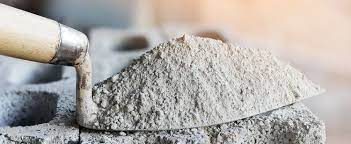On the telly this week, a show host asked his two guests why housing and other building projects were so expensively priced. I knew where to get the answer. It lies in the official lack of confidence in African/Ghanaian solutions. That mindset has, since the overthrow of Kwame Nkrumah, manifested itself in Ghanaian officials, business executives and public servants looking down on and actually rejecting local technologies and expertise.
I wanted to phone in, to remind all of us that the Tema township, the first purpose planned enclave in West Africa, was designed and built by Ghanaian engineers and building technologists in the 1960s (note: early 1960s); that the Achimota Overpass in Accra, constructed in the 1970s (repeat: 1970s), was the work of Ghanaian engineers.
Today, 60 years down the line, when knowledge abounds and the know-how of our scientists has increased, Ghanaian engineers and building technologists are side-lined as Brazilians and Chinese, (“white men”), with presumably “superior intelligence”, are building the Kwame Nkrumah Overpass in Accra and the four-tier Pokuase Interchange project.
One of the two guests on the TV programme blamed our excessive dependence on imported inputs, citing the case of the poorly patronized Ghana-made Pozzolana cement in the construction industry. Don’t blame contractors. In a country where government is the biggest client in the construction sector, all it takes is a change of official mindset that will manifest in a government policy decreeing that a certain minimum percentage of local materials be used on all projects, be they GoG or not.
Never heard of Pozzolana cement? It was invented by the Building and Road Research Institute (BRRI) of the CSIR. The “Clay Pozzolana” replaces up to 40 per cent of imported Ordinary Portland Cement for both concrete and general cement works.
For your money, a bag of pozzolana cement costs less than its Portland cement counterpart. Thus, on the market today, while a bag of Portland cement is going for GHc60.00, you get Pozzolana cement, the same quantity, for GHc50. The cost-saving was demonstrated when BRRI undertook the construction of 650 units of houses at Ashongman, Accra, using Pozzolana. By the time it handed over the houses, there had been a saving of 30 per cent.
Decades after completion of your project, there will be absolutely no cracks in a house built with Pozzolana. It is also more resistant to rain penetration and chemical attacks.
You want to know the millions of dollars Ghana spends importing cement? The country consumes eight million tonnes of cement a year. One tonne costs US$80.00. I leave readers to do the math.
Ghanaian scientists do not blow their horn, but talking about durability, it is on record that when the fence walls of the Aboadze Thermal Plant in the Western Region were collapsing as a result of acids and salts eating away the sandcrete block wall and metal fence, it was BRRI that went to the rescue, using salt-resistant burnt bricks and Pozzolana cement.
Yet, in spite of these facts and figures, how many Ghanaian real estate developers, government institutions and individual builders will opt for Pozzolana? It takes the official policy.
To be fair, there used to be a government policy in favour of 60 per cent of local materials for public buildings, but it has remained a mere paper tiger. The reason is not far fetched: the very government officials who have to promote Ghanaian solutions or ensure compliance with the law will themselves prefer imported materials!
It’s a mindset. The story is told of an attempt by the Building and Road Research Institute to introduce low-cost housing built with local materials - such as burnt bricks, clay roofing tiles, bamboo and compressed earth blocks - for workers in one of Ghana’s regional capitals.
A top government official moved heaven and earth to have the project stopped, describing the houses as “Atakpami houses”, implying they were below standard for educated city dwellers.
In a climate change-conscious world, Ghana is classified as a net consumer of carbon, as we import a lot of cement. Using 40% of clay-pozzolana in construction will be a significant step toward reducing Ghana’s carbon footprints.
In writing this article, I do not deceive myself that Ghana will, in the immediate tomorrow, officially jump onto the pozzolana bandwagon. I pray that they do, but if they don’t, I remember Bob Marley said it: “in the abundance of water, the fool is thirsty”.
Latest Stories
-
World Cup 2026Q: Lawrence Agyekum makes Black Stars debut in Chad win
52 minutes -
No one should be treated as guilty until proven – Deputy A-G on arrest of Kwabena Adu Boahene
3 hours -
‘We will do everything to stay top of Group I’ – Otto Addo
4 hours -
‘I had a good appetite for dinner’ – Mahama on Black Stars’ 5-0 win
4 hours -
High cost of pain: Why physiotherapy remains a luxury for many Ghanaians
4 hours -
2026 FIFA WCQ: Black Stars thrash Chad 5-0 to go top of Group I
4 hours -
Deloitte, Tony Elumelu Foundation strengthen commitment to empower 250,000 African entrepreneurs by 2030
4 hours -
Celebration wasn’t to mock ‘idol’ Ronaldo – Hojlund
5 hours -
Alisson returns to Liverpool after ‘suspected concussion’
5 hours -
ROBB Foundation calls for greater inclusion on World Down Syndrome Day
5 hours -
Photos: Mahama visits Adum fire scene, assesses damage
5 hours -
Muzic Mensah unveils soul-stirring single, ‘Heart Desire’
6 hours -
Could gum disease affect your performance? Experts weigh in
7 hours -
Savannah Regional Minister commends Saha Global for water expansion initiative
7 hours -
Ningo-Prampram MP secures emergency water relief, GWCL MD to visit for long-term solution
7 hours

